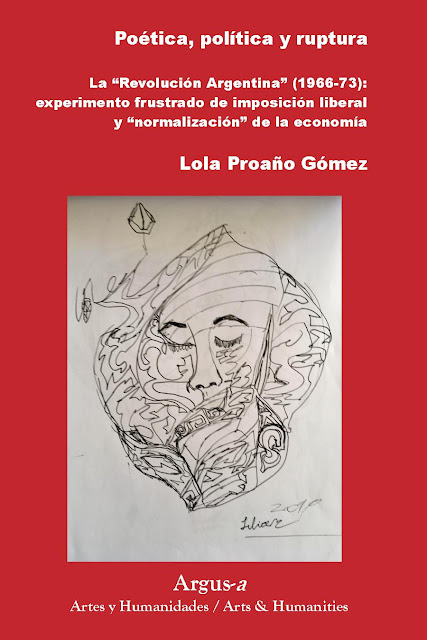 La revisión de los años de la llamada "Revolución Argentina, que dominó en el país entre 1966 y 1973, constituye un momento esencial de estudio para la comprensión de los eventos histórico-políticos que le siguieron: la dictadura del "Proceso de Reorganización Nacional" (1976-1983) y el gobierno de la restauración neoliberal (2015-2019). Mediante la observación de los productos culturales, el teatro, la lírica popular y la caricatura, vistos desde el presente y leídos como parte de la constelación formada, junto a ellos, por el discurso político, constituye una poética distintiva que revela aspectos que la historiografía ha dejado de lado. La Poética propuesta se despliega en múltiples metáforas que, isomórficamente y gracias al desplazamiento del sentido, descubre la lucha ideológica del momento. Este ensayo adopta algunos conceptos críticos fundamentales para el estudio: la teoría semántica de la metáfora (Ricoeur, Cohen, Casson y Black), la estructura del sentimiento (R. Williams), la teoría del estado burocrático autoritario (G. O'Donnell) y la teoría feminista y su relación con la nación metaforizada por la dictadura como cuerpo político. Poética, política y ruptura pretende hacer posible una mejor comprensión, desde la producción cultural, de la evolución histórica en la encrucijada de un pasado denso y sus posibles relaciones con el presente.
La revisión de los años de la llamada "Revolución Argentina, que dominó en el país entre 1966 y 1973, constituye un momento esencial de estudio para la comprensión de los eventos histórico-políticos que le siguieron: la dictadura del "Proceso de Reorganización Nacional" (1976-1983) y el gobierno de la restauración neoliberal (2015-2019). Mediante la observación de los productos culturales, el teatro, la lírica popular y la caricatura, vistos desde el presente y leídos como parte de la constelación formada, junto a ellos, por el discurso político, constituye una poética distintiva que revela aspectos que la historiografía ha dejado de lado. La Poética propuesta se despliega en múltiples metáforas que, isomórficamente y gracias al desplazamiento del sentido, descubre la lucha ideológica del momento. Este ensayo adopta algunos conceptos críticos fundamentales para el estudio: la teoría semántica de la metáfora (Ricoeur, Cohen, Casson y Black), la estructura del sentimiento (R. Williams), la teoría del estado burocrático autoritario (G. O'Donnell) y la teoría feminista y su relación con la nación metaforizada por la dictadura como cuerpo político. Poética, política y ruptura pretende hacer posible una mejor comprensión, desde la producción cultural, de la evolución histórica en la encrucijada de un pasado denso y sus posibles relaciones con el presente.
Abstract
The revision of the dictatorship called "Argentinean Revolution" that ruled from 1966 through 1973 constitute a moment of essential study for the understanding of the subsequent Argentine historical-political events both of the dictatorship of the "National Reorganization Process" (1976-1983) and the government of the neoliberal restoration (2015-2019).
Through the study of cultural production, we can appreciate how theater, popular lyrics, and caricature, viewed from the present and read as part of a constellation form, with the political discourse of the dictators, a metaphorical system that constitutes a distinctive poetics, revealing aspects that historiography has left aside. The poetics of the "split world" emerges, unfolding in numerous metaphors that isomorphically, and thanks to the ability to displace meaning reveal the ideological struggle of the moment. This essay adopts some critical concepts from Raymond Williams (structure of feeling), Hayden White (History as narration), the Metaphor Semantic Theory (Ricoeur, Cohen, Casson, Black), The Bureaucratic State (O'Donnell) and Feminism, and its relationship with the nation as a political body. Poetic, Politic, and Rupture aims at making possible a better understanding of the historical evolution at the crossroads of a dense past and its possible relationships with the present.


